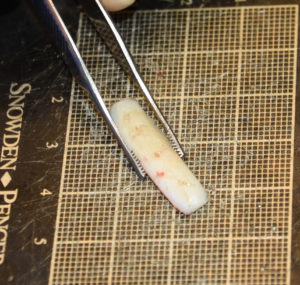When a rib graft is needed in a rhinoplasty it implies that there is a significant structural deficiency in the shape of the nose. When used in a primary rhinoplasty, it is by far most commonly used in non-Caucasian patients such as in the Asian nose. Changing the Asian nose requires focus on full length bridge augmentation and providing much increased tip support. The lack and weakness of the existing cartilage framework needs a combination of inlay and onlay cartilage grafting. Septal and ear cartilage, even when used in combination, are rarely enough.

To offer insight into how to decrease these rib graft complications, a paper entitled ‘ Use of Autologous Costal Cartilage in Asian Rhinoplasty’ was published in the December issue of Plastic and Reconstructive Surgery. From a Korean surgery group, 83 patients who had rib graft rhinoplasties over a six year period were studied with an average follow-up of nearly 30 months. Nearly half of the patients (47%) were revisional rhinoplasty cases that involved removal of dorsal synthetic implants. All of the patients had dorsal augmentation, 66 had grafts into the nasal tip, 58 into the septum and 23 into or onto the alar cartilages. The complication rate was 12% which included an equal number of infections (5) and warped cartilage grafts. (5) Graft exposure, mobility or significant resorption did not occur in any patient. Two patients underwent elective revision. The donor site experienced no pleural violations with two hypertrophic scars.
While these results are very good for any rib graft rhinoplasty series, the technical details of the operation are what is most pertinent. Their donor harvest was from the 6th to 8th rib and used an inframammary incision for female patients using only a 2.5 cm length incision. Graft lengths of 3 to 5cm were harvested and usually taken from the central portion of the harvested rib. Carving of the rib graft used a central portion of the graft for large single piece grafts for most dorsal augmentations and some laminar composites of multiple long flat pieces. Most dorsal augmentations require graft lengths of 4 or 5 cms. For flatter and straight pieces (like for columellar struts and spreader grafts), longitudinal cutting leaving peripheral portions on both sides of the graft was performed. Both methods of graft carving are design to reduce the risk of warping, which they appear to have largely done.
While Asian rhinoplasty overwhelmingly uses synthetic implants for dorsal augmentation around the world, such widespread use in a primarily young patient population may not be wise long-term. Implants placed just under the skin in the face, particularly if they provide a significant soft tissue push, may pose eventual tissue thinning and implant exposure and infection. While rib grafts pose none of these long-term concerns, they are avoided by surgeons largely because of the extra work and the unfamiliarity of handling rib grafts. (patients of course want to avoid them because of the scar and donor site pain and recovery)
This paper shows that attention to the details of harvesting and shaping rib grafts can avoid many of the problems of warping and donor site scars They show a revision rate with rib grafts that is likely far lower than that of infection and implant exposure that occurs using synthetic implants in the nose.
Dr. Barry Eppley
Indianapolis, Indiana


